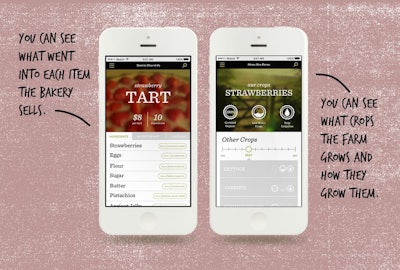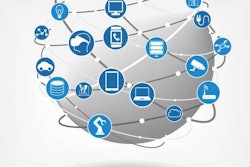
You may or may not be familiar with digital currency. It is Internet-based currency that exhibits properties similar to physical currencies that allow for instantaneous transactions and borderless transfer-of-ownership. The transactions are faster and incur less cost than traditional currency.
You may or may not be familiar with a “block chain.” It is a distributed data store that holds a public ledger of transactions for digital currencies, such as bitcoin.
Digital currency is very new and it is growing rapidly. Our project at the Harvard Innovation Lab, Food + Bits + Blocks, is exploring how bitcoin and block chain technology might change our everyday lives.
Whether we buy a taco or an iPhone, we’re at the receiving end of a supply chain that often stretches around the globe. Usually we don’t think much about it, and this is a good thing. But sometimes it’s important to know more. Taking a bite out of a taco involves a certain amount of trust: trust that the kitchen that made the taco is sanitary, that the ingredients that went into it are fresh, and that the taco tastes good. This trust is critical, but there’s so much more we could know. We could create entirely new relationships with the stuff we buy, namely where it came from and how it arrived in our hands.
Block chains offer a way to introduce transparency into supply chains and to create new opportunities for participation. As a shared, secure record of exchange, block chains can track what went into a product and who handled it along the way, breaking supply chain data out of silos, and revealing the provenance of a product to everyone involved from originator to end user.
This transparency will impact all sorts of products, but is especially relevant to food supply chains. Let’s see how these technologies might change the everyday experience of buying, cooking, and serving dinner to friends.
It’s Saturday morning and you’re at your favorite bakery for a pastry and coffee. A strawberry tart catches your eye and you order one along with a coffee.
The strawberries in the tart are delicious, and you’re curious about where they came from. The bakery purchases and manages its ingredients inventory using a system that you can use too on your phone. You see all the ingredients that went into the tart and where they originated.
The strawberries came from a small farm about 200 miles away. The farm records and shares many of the details of how it operates. This lets the farm share good practices with other farms and get certifications. You see that the farm grows strawberries in a field that uses drip irrigation and is certified organic and low water use. You can also see what else they’re growing right now: lettuce, carrots, summer squash, and kale.
You follow a link to the farm’s blog and read that they sell directly to individuals and that you can buy their strawberries. You’re an avid preserve maker and so you buy a smart contract, committing to buying 5 pounds of strawberries if the price goes below $5 a pound. Since the contract is binding and automatically executed, the farm can use it to forecast their revenue for the season.
A few weeks pass, and you get a push notification on your phone. The farm is having a bumper crop of strawberries, and your contract has been executed. You stop by their stall at the farmer’s market to pick them up. You try one and they’re so good, you decide to have some friends over for a strawberry themed dinner party.
You head to the supermarket for dinner ingredients. As you walk in you see some brownies that look good. You have to be careful though. One of your friends has a serious peanut allergy and you can’t serve anything that has come into contact with peanuts during processing. You have an app on your phone that lets you find products without certain ingredients and you have a saved filter for peanuts that you’ve used before. The app checks not just the ingredients of the product, but the entire supply chain of ingredients.
By digitally capturing the identity of goods in an interoperable way, block chains establish provenance for every ingredient as it travels from farm to table. This transparency gives consumers more information about where their food comes from, how it was processed, and how it arrived at the plate. It gives suppliers the ability to see downstream in the supply chain--who is buying their goods and how they’re used.


















